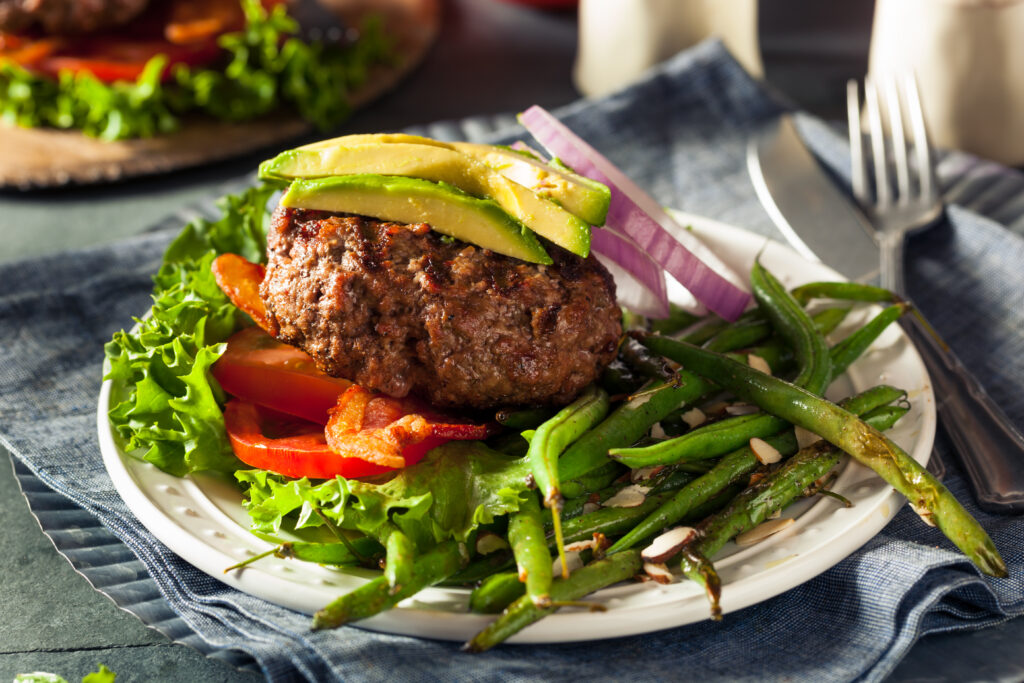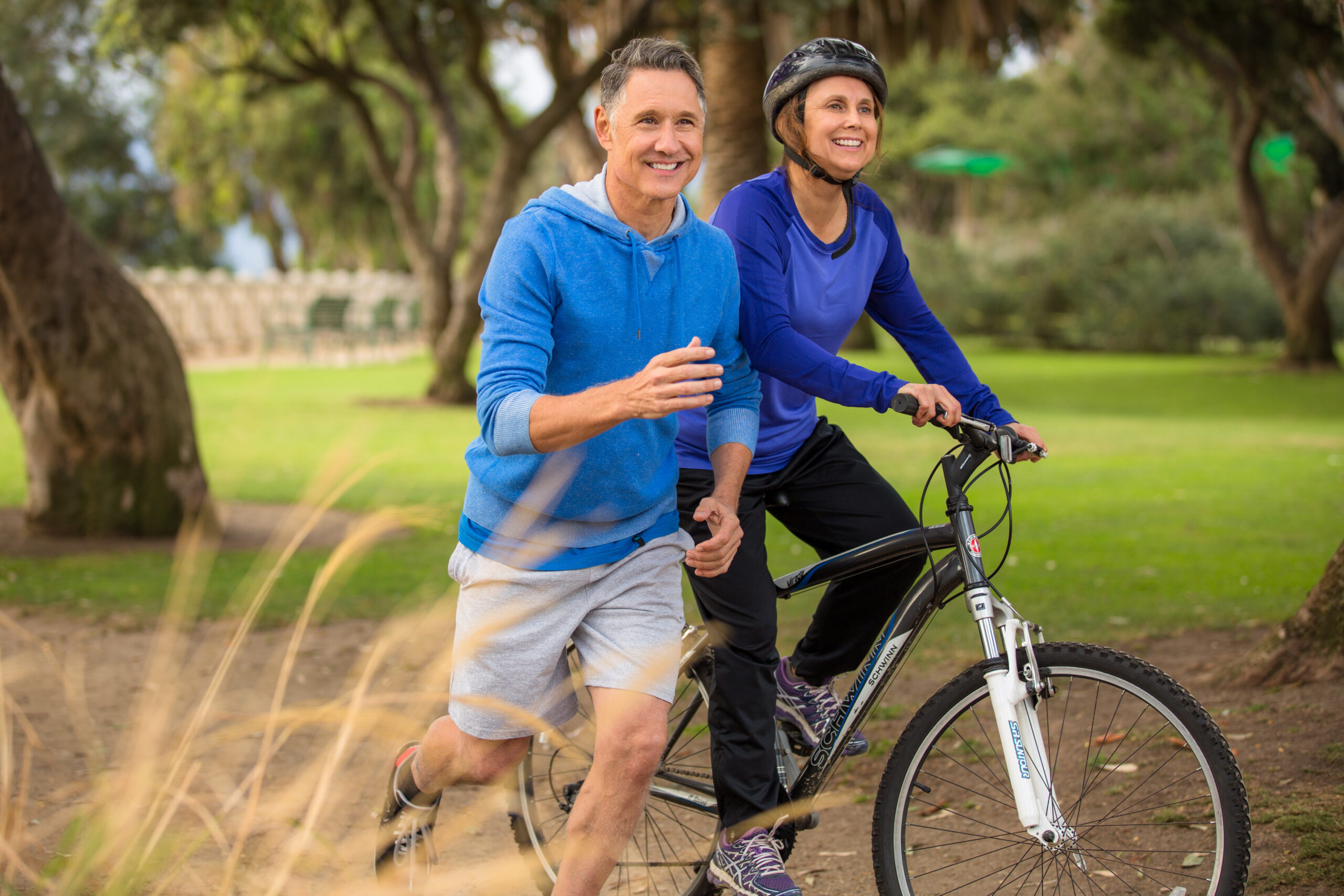The Answer To Autoimmune Conditions – Solutions That Target The Core Of The Problem
To understand the answer to autoimmune conditions, you must first realize what causes autoimmune conditions. If you haven’t already read my previous blog on the 3-legged stool analogy that explains what causes autoimmune conditions, I invite you to do so now. To summarize, autoimmune conditions come about due to a combination of stressors, microbiome dysfunction, and undesirable epigenetic expression. Each of these aspects come together and send the immune system into disarray, causing it to attack healthy tissue.
The answer to autoimmune conditions is a five-pronged solution that I call the 5Rs. R1 involves removing the sources that are causing autoimmunity. R2 focuses on regenerating the cell membrane that has been damaged by inflammation. R3 aims to restore ATP production in the mitochondria of cells so they have sufficient energy to perform detoxification responsibilities. The goal of R4 is to reduce chronic, systemic inflammation that is linked to autoimmunity. R5 finishes the process by improving epigenetic expression so we can turn autoimmunity off.
In conjunction with the 5Rs, ancient healing strategies allow our body to heal itself. Specifically, taking part in dietary adaptation, intermittent fasting, and cycling between feasting and famine allows us to reset our microbiome. I know it sounds like a lot, but I will simplify it all below. Just realize, no matter what anyone tells you, there is an answer to autoimmune conditions.
The Answer To Autoimmune Conditions – R1 Removing The Source
Toxins in our environment have the potential to trigger autoimmune conditions. These toxins come from various sources such as pollution, pesticides, heavy metals, mold, hidden infections like dental cavitations, and chemicals in our food and personal care products.
Toxins disrupt the delicate balance of our immune system and cause it to overreact and attack healthy cells. This leads to the development or exacerbation of autoimmune conditions. If you want a solution to autoimmune diseases, the first step is to avoid toxins in your environment.1
Read more about the toxins all around you.
Choosing organic and natural products, avoiding processed foods, and limiting exposure to pollution and chemicals goes a long way in reducing toxin exposure. However, certain toxins like heavy metals are difficult to remove from the body. To remove heavy metals like mercury and lead, we must be proactive.
Removing Heavy Metals From The Body
Heavy metals disrupt the balance of our immune system by activating certain types of immune cells and suppressing others, leading to autoimmune conditions. Heavy metals also increase oxidative stress in the body. Oxidative stress damages cells and tissues, leading to chronic inflammation and contributing to the development of autoimmune conditions.
Even more alarming, heavy metals directly damage immune cells, altering their function and trigger an autoimmune response. These effects on the immune system can be long-lasting, even after exposure to heavy metals has ceased. The only solution to avoid a lifetime of suffering from the effects of heavy metals is to remove them from the body.2
Read more about heavy metal toxicity.
Heavy Metal Chelation – A Permanent Solution To Heavy Metal Toxicity
Heavy metal chelation in conjunction with binders works by pulling toxic metals from the tissues and carrying them out of the body through urine or stool. This process reduces the overall burden of heavy metals in the body, thereby removing the source of what is causing autoimmune conditions.3
Read more about heavy metal chelation.
The Answer To Autoimmune Conditions – R2 Regenerating The Cell Membrane
Unchecked chronic inflammation damages the cellular membrane, the lipid bilayer that surrounds each and every cell in our body. When our cellular membrane is inflamed, autoimmune conditions and hormone dysfunction are the result. Cellular membrane inflammation results in misshapen integral membrane proteins (IMP) where hormones bind. If hormones are unable to dock at IMPs, they can’t share their message with the cell.4 5
Additionally, cellular membrane inflammation reduces the ability of a cell to both detoxify metabolic byproducts as well as bring in new raw materials that are required for cellular function. Simply put, our cells are drowning in toxins while simultaneously starving for food.6
Our cellular membranes are made up of both omega-6 fatty acids and omega-3 fatty acids. The driving factor behind cellular membrane inflammation are rancid omega-6 fatty acids. Specifically, processed vegetable oils contained in nearly all processed foods are full of rancid omega-6 fatty acids.7 8
To regenerate the cellular membrane requires diet modifications that focus on consuming foods that contain a combination of high quality omega-6 fatty acids and omega-3 fatty acids.9
Consuming a healthy diet that includes wild caught fish, organic grass-fed meat, nuts, seeds, greens, and healthy fats like avocado and olive oil offer high quality omega-6 fatty acids and omega-3 fatty acids that build the cellular membrane back up again.10
Read more about my Cellular Healing Diet.

The Answer To Autoimmune Conditions – R3 Restore Cellular Energy
As soon as cellular membrane inflammation is addressed, the next step is to restore cellular energy by improving ATP production in the mitochondria. Since ATP is required for cellular detox, optimizing energy production is crucial to restoring health.11
Ideal ATP production allows for the synthesis of glutathione. Glutathione is the master antioxidant that enables the cell to remove toxins as well as neutralize free radicals. When we are producing enough glutathione, cellular membrane inflammation is no longer an issue.12
Optimizing ATP production also improves epigenetic expression. By improving the function of the mitochondria, we essentially have control over which genes are being expressed.13
Restoring cellular energy is accomplished by eating a healthy diet, exercising, stress reduction, optimal sleeping patterns, as well as practicing ancient healing techniques that I will discuss a bit later.14 15 16 17
Read more about how sleep and autoimmune conditions are related.
The Answer To Autoimmune Conditions – R4 Reducing Inflammation
In addition to optimizing ATP levels, there are other steps we can take to reduce cellular inflammation. Specifically, maintaining ideal blood glucose levels and reducing insulin spikes allows us to avoid unnecessary inflammation. This can be accomplished by eating correctly, as well as practicing diet variation.18 19
Additionally, taking part in fasting has been shown to reduce systemic inflammation significantly. Finally, exercising as well as reducing stress puts a stop to inflammation that allows us to finally put an end to autoimmune conditions.20 21 22
The Answer To Autoimmune Conditions – R5 Reestablishing Methylation
Methylation is a fundamental biological process that serves as a key player in gene regulation and the preservation of cellular function. It entails the addition of a methyl group (-CH3) to DNA, which results in changes to gene expression without altering their core sequence. This intricate process plays an indispensable role in normal development and is crucial for maintaining proper gene expression, genomic stability, and cellular differentiation. Deviations in DNA methylation patterns have been linked to a multitude of diseases including autoimmune conditions.23
As we discussed earlier, optimizing the production of glutathione improves epigenetic methylation, allowing us to put our best genes forward. Consuming a diet that contains high levels of B vitamins provides us with the raw materials required to perform methylation. Food high in choline as well as betaine allow for the synthesis of SAMe, a methyl donor.24 25
A diet like my Cellular Healing Diet contains all of these substances in copious amounts.
A healthy microbiome also plays a significant role in ideal methylation patterns. In addition to eating properly, consuming fermented products like sauerkraut, kimchi, and kefir provide the microbiome with sufficient quantities of probiotics that are required for optimal microbiome diversity.26

Read more about optimizing the microbiome.
The Answer To Autoimmune Conditions – Ancient Healing Strategies
There are a number of ancient healing strategies that our ancestors practiced due to necessity that are still ingrained within us. Since food wasn’t always available, intermittent fasting as well as dietary adaptation, was the norm. We have long practiced feast and famine cycling while consuming limited food options based on availability.
Feast and famine involves alternating periods of extended fasting with periods of consuming larger amounts of calories to make up for the deficit. Balancing both of these metabolic pathways is the key to good health and inflammation reduction. Fasting removes senescence cells (non-functional zombie cells) through autophagy and feasting triggers the mTor pathway, building the body back up stronger than before. 27 28 29
Dietary adaptation focuses on consuming different foods on different days. For example, a ketogenic low carb day, a high carb day, and a fasting day should all be incorporated at irregular intervals to keep the body guessing as to what is coming next. This type of cycling has numerous benefits for both the body and mind.30
Read more about dietary variation and feast/famine cycling.
Hot And Cold Therapy
Another ancient healing strategy is hot and cold therapy. This involves exposing the body to extreme temperatures in order to improve overall health and reduce inflammation. This could include taking hot and cold showers, as well as sitting in a sauna or ice bath. Avoid taking either cold or hot therapy to the extreme.31 32
Read more about the benefits of hot therapy and cold therapy.
Exercise
Exercise, in the form of physical labor, was something our ancestors had to do out of necessity. Similar to the dietary adaptation approach, alternate between different types of manual labor or workouts on different days. Some days, focus on explosive training, such as high-intensity interval training (HIIT) or heavy weightlifting. On other days, take part in slower activities like walking.33
The Answer To Autoimmune Conditions – Solutions That Target The Core Of The Problem
There is an answer to autoimmune conditions if you are willing to get to the exact cause of the problem. Using my 5R approach focuses on removing stressors like toxins, improving microbiome diversity, and optimizing epigenetic expression. Fixing all three legs of the 3-legged stool puts an end to chronic inflammation by normalizing the immune system, allowing the body to come back into a state of balance.
If you want help targeting exactly what is causing your autoimmune condition, begin by taking an inflammation test and consultation.
Read more about achieving ideal health.
References
1 Kharrazian D. Exposure to Environmental Toxins and Autoimmune Conditions. Integr Med (Encinitas). 2021 Apr;20(2):20-24. PMID: 34377090; PMCID: PMC8325494.
2 Witkowska D, Słowik J, Chilicka K. Heavy Metals and Human Health: Possible Exposure Pathways and the Competition for Protein Binding Sites. Molecules. 2021 Oct 7;26(19):6060. doi: 10.3390/molecules26196060. PMID: 34641604; PMCID: PMC8511997.
3 Sears ME. Chelation: harnessing and enhancing heavy metal detoxification–a review. ScientificWorldJournal. 2013 Apr 18;2013:219840. doi: 10.1155/2013/219840. PMID: 23690738; PMCID: PMC3654245.
4 Langan D, Rose NR, Moudgil KD. Common innate pathways to autoimmune disease. Clin Immunol. 2020 Mar;212:108361. doi: 10.1016/j.clim.2020.108361. Epub 2020 Feb 10. PMID: 32058071; PMCID: PMC8324042.
5 Majeed S, Ahmad AB, Sehar U, Georgieva ER. Lipid Membrane Mimetics in Functional and Structural Studies of Integral Membrane Proteins. Membranes (Basel). 2021 Sep 3;11(9):685. doi: 10.3390/membranes11090685. PMID: 34564502; PMCID: PMC8470526.
6 Ammendolia, D.A., Bement, W.M. & Brumell, J.H. Plasma membrane integrity: implications for health and disease. BMC Biol 19, 71 (2021). https://doi.org/10.1186/s12915-021-00972-y
7 Patterson E, Wall R, Fitzgerald GF, Ross RP, Stanton C. Health implications of high dietary omega-6 polyunsaturated Fatty acids. J Nutr Metab. 2012;2012:539426. doi: 10.1155/2012/539426. Epub 2012 Apr 5. PMID: 22570770; PMCID: PMC3335257.
8 DiNicolantonio JJ, O’Keefe JH. Omega-6 vegetable oils as a driver of coronary heart disease: the oxidized linoleic acid hypothesis. Open Heart. 2018 Sep 26;5(2):e000898. doi: 10.1136/openhrt-2018-000898. PMID: 30364556; PMCID: PMC6196963.
9 DiNicolantonio JJ, O’Keefe J. The Importance of Maintaining a Low Omega-6/Omega-3 Ratio for Reducing the Risk of Autoimmune Diseases, Asthma, and Allergies. Mo Med. 2021 Sep-Oct;118(5):453-459. PMID: 34658440; PMCID: PMC8504498.
10 Schwingshackl L, Hoffmann G. Monounsaturated fatty acids, olive oil and health status: a systematic review and meta-analysis of cohort studies. Lipids Health Dis. 2014 Oct 1;13:154. doi: 10.1186/1476-511X-13-154. PMID: 25274026; PMCID: PMC4198773.
11 Cooper GM. The Cell: A Molecular Approach. 2nd edition. Sunderland (MA): Sinauer Associates; 2000. Mitochondria. Available from: https://www.ncbi.nlm.nih.gov/books/NBK9896/
12 Perricone C, De Carolis C, Perricone R. Glutathione: a key player in autoimmunity. Autoimmun Rev. 2009 Jul;8(8):697-701. doi: 10.1016/j.autrev.2009.02.020. Epub 2009 Feb 13. PMID: 19393193.
13 Santos JH. Mitochondria signaling to the epigenome: A novel role for an old organelle. Free Radic Biol Med. 2021 Jul;170:59-69. doi: 10.1016/j.freeradbiomed.2020.11.016. Epub 2020 Dec 1. PMID: 33271282; PMCID: PMC8166959.
14 Kyriazis ID, Vassi E, Alvanou M, Angelakis C, Skaperda Z, Tekos F, Garikipati VNS, Spandidos DA, Kouretas D. The impact of diet upon mitochondrial physiology (Review). Int J Mol Med. 2022 Nov;50(5):135. doi: 10.3892/ijmm.2022.5191. Epub 2022 Sep 21. PMID: 36129147; PMCID: PMC9542544.
15 Sorriento D, Di Vaia E, Iaccarino G. Physical Exercise: A Novel Tool to Protect Mitochondrial Health. Front Physiol. 2021 Apr 27;12:660068. doi: 10.3389/fphys.2021.660068. PMID: 33986694; PMCID: PMC8110831.
16 Picard M, McEwen BS. Psychological Stress and Mitochondria: A Systematic Review. Psychosom Med. 2018 Feb/Mar;80(2):141-153. doi: 10.1097/PSY.0000000000000545. PMID: 29389736; PMCID: PMC5901654.
17 Melhuish Beaupre LM, Brown GM, Braganza NA, Kennedy JL, Gonçalves VF. Mitochondria’s role in sleep: Novel insights from sleep deprivation and restriction studies. World J Biol Psychiatry. 2022 Jan;23(1):1-13. doi: 10.1080/15622975.2021.1907723. Epub 2021 May 6. PMID: 33821750.
18 Norton L, Shannon C, Gastaldelli A, DeFronzo RA. Insulin: The master regulator of glucose metabolism. Metabolism. 2022 Apr;129:155142. doi: 10.1016/j.metabol.2022.155142. Epub 2022 Jan 20. PMID: 35066003.
19 Petersen MC, Shulman GI. Mechanisms of Insulin Action and Insulin Resistance. Physiol Rev. 2018 Oct 1;98(4):2133-2223. doi: 10.1152/physrev.00063.2017. PMID: 30067154; PMCID: PMC6170977.
20 Vasim I, Majeed CN, DeBoer MD. Intermittent Fasting and Metabolic Health. Nutrients. 2022 Jan 31;14(3):631. doi: 10.3390/nu14030631. PMID: 35276989; PMCID: PMC8839325.
21 Scheffer DDL, Latini A. Exercise-induced immune system response: Anti-inflammatory status on peripheral and central organs. Biochim Biophys Acta Mol Basis Dis. 2020 Oct 1;1866(10):165823. doi: 10.1016/j.bbadis.2020.165823. Epub 2020 Apr 29. PMID: 32360589; PMCID: PMC7188661.
22 Rohleder N. Stress and inflammation – The need to address the gap in the transition between acute and chronic stress effects. Psychoneuroendocrinology. 2019 Jul;105:164-171. doi: 10.1016/j.psyneuen.2019.02.021. Epub 2019 Feb 20. PMID: 30826163.
23 Gouil Q, Keniry A. Latest techniques to study DNA methylation. Essays Biochem. 2019 Dec 20;63(6):639-648. doi: 10.1042/EBC20190027. PMID: 31755932; PMCID: PMC6923321.
24 Barati S, Fabrizio C, Strafella C, Cascella R, Caputo V, Megalizzi D, Peconi C, Mela J, Colantoni L, Caltagirone C, Termine A, Giardina E. Relationship between Nutrition, Lifestyle, and Neurodegenerative Disease: Lessons from ADH1B, CYP1A2 and MTHFR. Genes (Basel). 2022 Aug 22;13(8):1498. doi: 10.3390/genes13081498. PMID: 36011409; PMCID: PMC9408177.
25 Raghubeer S, Matsha TE. Methylenetetrahydrofolate (MTHFR), the One-Carbon Cycle, and Cardiovascular Risks. Nutrients. 2021 Dec 20;13(12):4562. doi: 10.3390/nu13124562. PMID: 34960114; PMCID: PMC8703276.
26 Leeuwendaal NK, Stanton C, O’Toole PW, Beresford TP. Fermented Foods, Health and the Gut Microbiome. Nutrients. 2022 Apr 6;14(7):1527. doi: 10.3390/nu14071527. PMID: 35406140; PMCID: PMC9003261.
27 Vasim I, Majeed CN, DeBoer MD. Intermittent Fasting and Metabolic Health. Nutrients. 2022 Jan 31;14(3):631. doi: 10.3390/nu14030631. PMID: 35276989; PMCID: PMC8839325.
28 Saxton RA, Sabatini DM. mTOR Signaling in Growth, Metabolism, and Disease. Cell. 2017 Mar 9;168(6):960-976. doi: 10.1016/j.cell.2017.02.004. Erratum in: Cell. 2017 Apr 6;169(2):361-371. PMID: 28283069; PMCID: PMC5394987.
29 Wang Y, Zhang H. Regulation of Autophagy by mTOR Signaling Pathway. Adv Exp Med Biol. 2019;1206:67-83. doi: 10.1007/978-981-15-0602-4_3. PMID: 31776980.
30 Abdelhamid A, Jennings A, Hayhoe RPG, Awuzudike VE, Welch AA. High variability of food and nutrient intake exists across the Mediterranean Dietary Pattern-A systematic review. Food Sci Nutr. 2020 Jul 29;8(9):4907-4918. doi: 10.1002/fsn3.1784. PMID: 32994952; PMCID: PMC7500794.
31 Hussain J, Cohen M. Clinical Effects of Regular Dry Sauna Bathing: A Systematic Review. Evid Based Complement Alternat Med. 2018 Apr 24;2018:1857413. doi: 10.1155/2018/1857413. PMID: 29849692; PMCID: PMC5941775.
32 Leppäluoto J, Westerlund T, Huttunen P, Oksa J, Smolander J, Dugué B, Mikkelsson M. Effects of long-term whole-body cold exposures on plasma concentrations of ACTH, beta-endorphin, cortisol, catecholamines and cytokines in healthy females. Scand J Clin Lab Invest. 2008;68(2):145-53. doi: 10.1080/00365510701516350. PMID: 18382932.
33 Boutcher S. H. (2011). High-intensity intermittent exercise and fat loss. Journal of obesity, 2011, 868305. https://doi.org/10.1155/2011/868305




